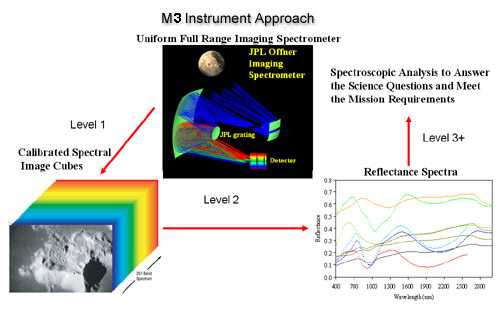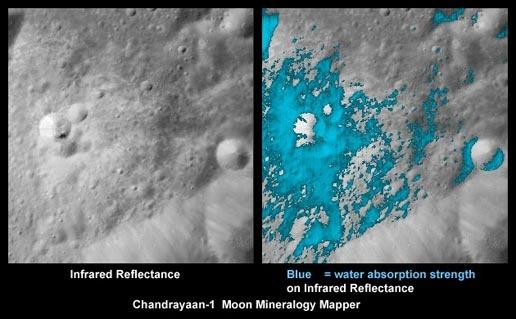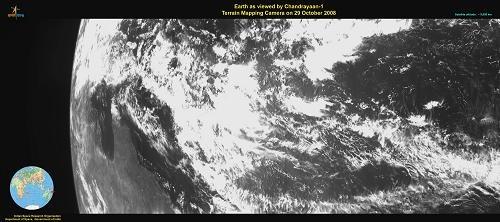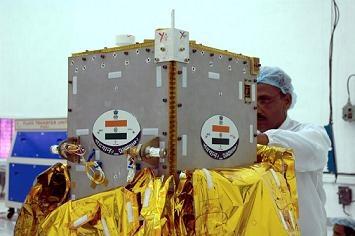M3 high-resolution mineral compositional maps will improve our understanding of the early evolution of a differentiated planetary body and also provide a high-resolution assessment of lunar resources.
Scientific Objectives
The primary Science goal of M3 is to characterize and map lunar surface mineralogy in the context of lunar geologic evolution. This translates into several sub-topics relating to understanding the highland crust, basaltic volcanism, impact craters, and potential volatiles.
The primary exploration goal is to assess and map lunar mineral resources at high spatial resolution to support planning for future, targeted missions.
These M3 goals translate directly into the following requirements
- Accurate measurement of diagnostic absorption features of rocks and minerals.
- High spectral resolution for deconvolution into mineral components.
- High spatial resolution for assessment of geologic context and active processes.
The M3 scientific instrument is a high throughput push broom imaging spectrometer operating in 0.7 to 3.0 � m range. It measures solar reflected energy using a two-dimensional HgCdTe detector array.
Sampling : 10 nanometers
Spatial resolution: 70 m/pixel [from 100 km orbit]
Field of View: 40 km [from 100 km orbit]
Weight: about 7 kg
Power average: about 13 W
Moon Mineralogy Mapper (M3) payload is from Brown University and Jet Propulsion Laboratory, USA through NASA
Links for addition details
http://moonmineralogymapper.jpl.nasa.gov
http://discovery.nasa.gov/M-Cube.html



